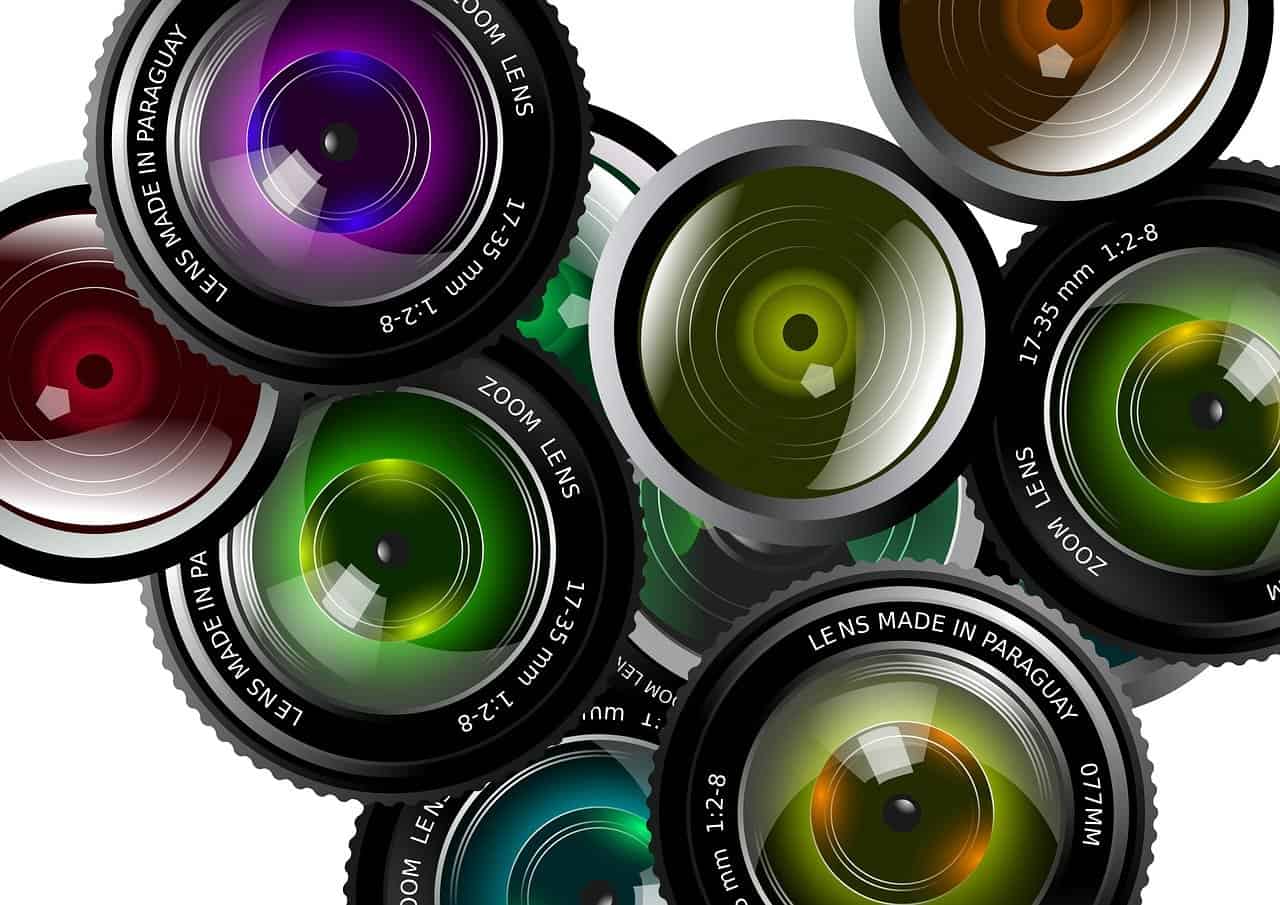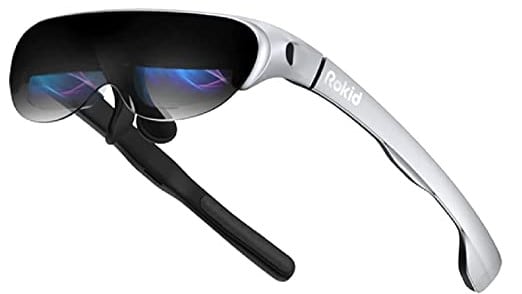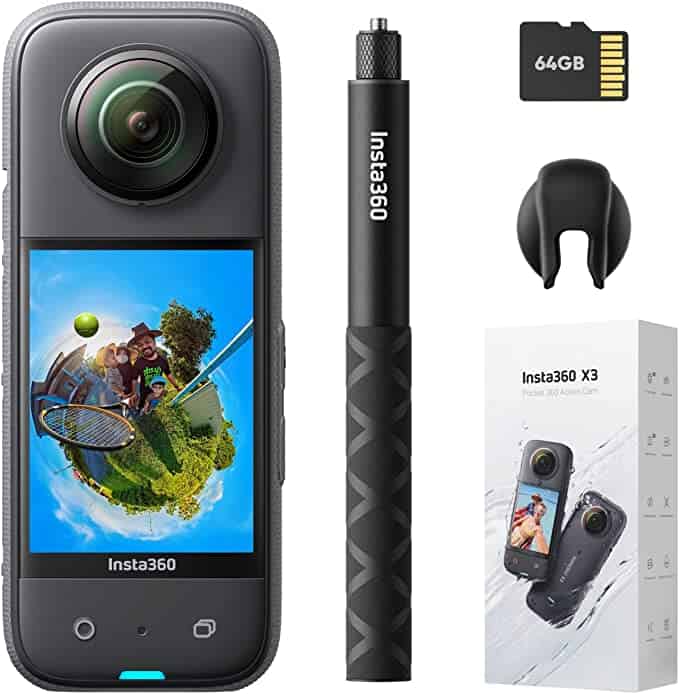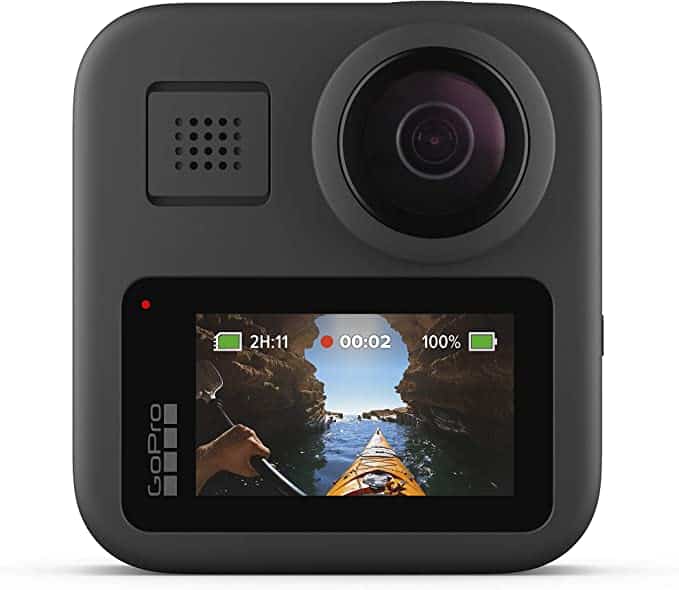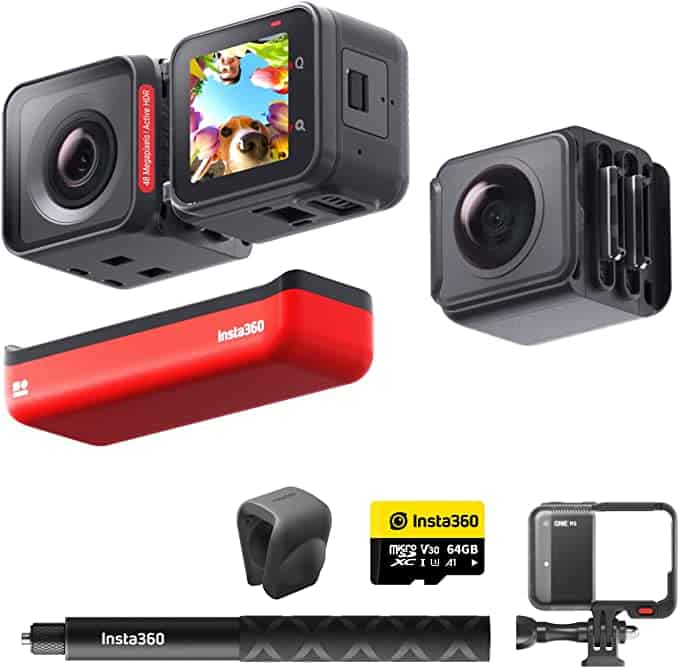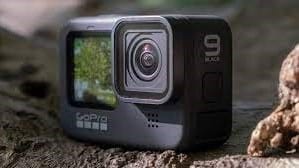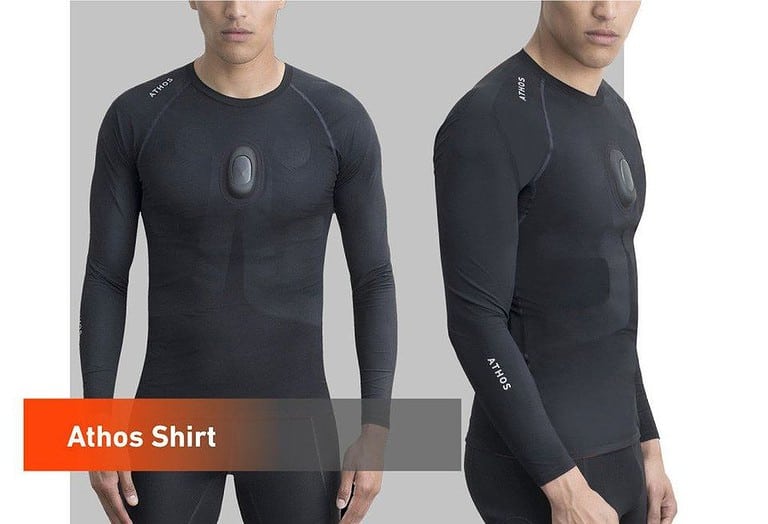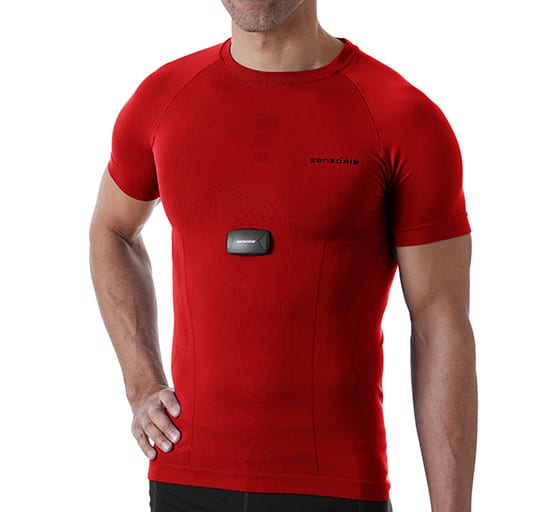Photography Revolution: 27 Technologies Reshaping Sports & Outdoors
27 Technologies Reshaping Sports & Outdoors Photography
This blog post explores how emerging technologies are revolutionizing outdoor photography and videography. It highlights the transformative impact of advanced tools and techniques on capturing and documenting outdoor adventures.
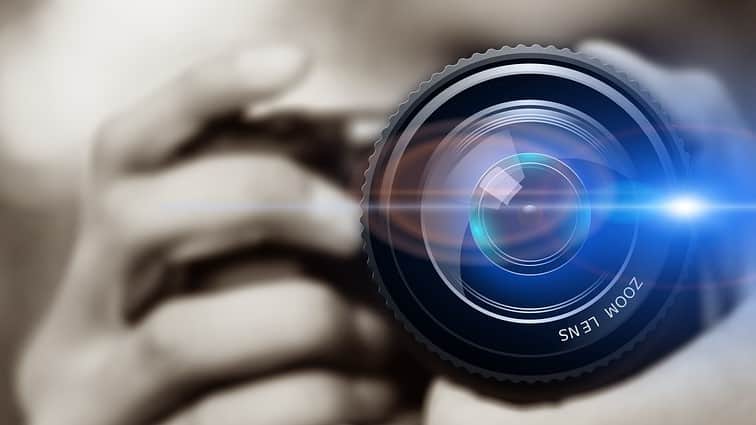

From drones and 360-degree cameras to artificial intelligence and virtual reality, these technologies push the boundaries of creativity and enable outdoor enthusiasts to capture breathtaking moments in ways never thought possible.
The post sets the stage for an in-depth exploration of how these emerging technologies reshape the visual storytelling landscape and invites readers to embrace a new era of capturing and sharing outdoor experiences.
According to Phototutorial, there are 1.7 Trillion photos taken per year (54,400/sec). In addition, according to Statistica, 83.3% of internet users accessed video content (2022).
In the below post, we will go through an extensive discussion of the top 27 technologies that will shape the future of photography and videography:
What Are Emerging Technologies for Photography and Videography?
1. Drone Technology:
Drone technology has revolutionized outdoor photography and videography by offering unprecedented aerial perspectives and dynamic footage. Uncrewed aerial vehicles equipped with high-quality cameras allow photographers and videographers to capture stunning views and unique angles from above.
Drones provide a bird’s-eye view of mountains, coastlines, and vast landscapes, showcasing the grandeur of nature. They can also track the movement of outdoor enthusiasts, adding excitement and immersion to the captured footage.
Thanks to advanced camera stabilization systems, drones offer smooth and steady footage, making aerial photography and videography accessible to outdoor enthusiasts of all skill levels. Moreover, drones serve practical purposes, such as location scouting and route planning, enhancing safety and preparation for outdoor adventures. Responsible drone usage, including adherence to regulations and respect for privacy, is crucial for ethical and enjoyable outdoor photography and videography experiences.
2. Virtual Reality (VR):
Virtual Reality (VR) technology has transformed the landscape of outdoor and sports photography and videography, offering immersive experiences that transport users to virtual environments and allow them to relive outdoor adventures.
By donning VR headsets, users can enter a world replicating the sights and sounds of their favorite outdoor destinations, providing a heightened sense of presence and immersion. With the ability to capture and deliver 360-degree videos, VR enables viewers to experience outdoor adventures from all angles, creating a sense of realism and engagement.
Interactivity further enhances the VR experience, allowing users to navigate through virtual landscapes and interact with objects, adding a new level of attention and connection to the virtual environment.
Moreover, VR experiences can be shared with others, fostering a sense of community and inspiring future outdoor explorations. As VR technology advances, with display resolution and motion tracking improvements, virtual outdoor adventures will become even more realistic and compelling, driving a deeper appreciation for nature and encouraging exploration and conservation efforts.
3. Augmented Reality (AR):
Augmented Reality (AR) revolutionizes outdoor and sports photography and videography by overlaying digital information onto the real world, enhancing the visual experience and interactivity.
Through AR-enabled devices like smartphones, users can access contextual information superimposed directly onto their live camera feed, such as location data, elevations, or historical facts. This enriches the outdoor experience by providing instant access to relevant information and fostering a deeper understanding and appreciation of the environment being captured.
Moreover, AR allows incorporating educational materials, giving users an interactive and immersive approach to discovering and studying the natural world. Additionally, AR opens up creative possibilities by inserting virtual objects or characters into real-world scenes, adding a touch of fantasy and storytelling to outdoor visuals.
With advancements in real-time image recognition and tracking, AR assists photographers and videographers in achieving the desired composition and framing, ensuring optimal shots in dynamic outdoor environments.
4. Artificial Intelligence (AI) in Image Processing:
Artificial Intelligence (AI) has revolutionized image processing for outdoor photographers and videographers by automating tasks and saving valuable time.
AI-powered algorithms can automatically enhance and edit images, adjusting parameters like exposure, color balance, and sharpness to improve overall quality. This automated enhancement process ensures consistent and visually stunning results, allowing content creators to focus on their artistic vision.
AI also aids in advanced editing tasks such as object removal and sky replacement, intelligently detecting and eliminating unwanted elements or replacing skies to enhance the composition and impact of outdoor visuals.
AI can upscale low-resolution or noisy images, generating high-quality visuals by leveraging patterns learned from large datasets. AI algorithms also assist in organizing and tagging image libraries, making it easier to search and retrieve specific images based on content.
As AI technology advances, we can expect even more sophisticated image processing capabilities, further streamlining workflows and empowering photographers and videographers to produce exceptional outdoor visuals easily.
5. Computational Photography:
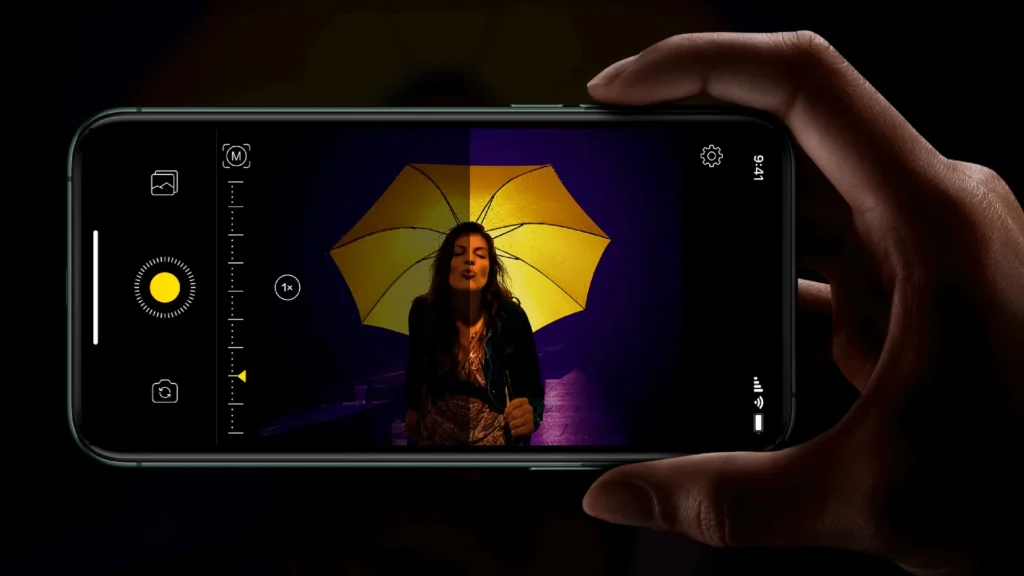
Combining hardware and software techniques, computational photography has revolutionized outdoor photography by enabling advanced features such as image stabilization, high dynamic range (HDR), and low-light photography.
By leveraging sophisticated algorithms, cameras can overcome the limitations of traditional optical systems and deliver exceptional results in various shooting conditions.
Advanced image stabilization algorithms analyze multiple frames to eliminate camera shake, ensuring sharp and clear images even in dynamic outdoor environments.
HDR techniques capture multiple exposures of a scene and blend them to preserve details across the entire tonal range, allowing outdoor photographers to capture stunning landscapes with a balanced exposure.
Moreover, computational photography excels in low-light conditions by employing noise reduction algorithms and advanced image processing to deliver clean, noise-free images with vibrant colors, enabling photographers to capture the beauty of outdoor scenes even in dimly lit environments.
Computational photography has enormous promise to expand the capabilities of outdoor photography as technology develops, pushing the envelope of what is conceivable and enabling photographers to take magnificent photos with ease and accuracy.
6. 360-Degree Cameras:
360-degree cameras have revolutionized outdoor photography and videography by capturing a complete spherical view, enabling immersive and interactive experiences.
These cameras allow outdoor enthusiasts to share their adventures more comprehensively and engagingly, allowing viewers to explore the scene from any angle and feel like they are physically in the environment. By combining the captured footage with virtual reality or augmented reality platforms, the immersive experience is further enhanced.
360-degree cameras ensure that no detail is missed, providing a more complete and immersive perspective of the outdoor environment. Whether through still photography or high-quality videos, 360-degree cameras offer a versatile tool to capture and share the essence of outdoor experiences in a captivating and immersive manner.
7. Action Cameras:
Action cameras have gained popularity among outdoor enthusiasts for their compact and rugged design, providing high-quality video and photo capabilities in extreme conditions. These portable and lightweight cameras allow unrestricted movement while being transported outdoors.
Built to withstand shocks, water, and dust, action cameras capture stunning visuals, offering features like image stabilization and slow-motion recording to enhance the quality of the footage.
With wide-angle lenses and versatile mounting options, action cameras allow users to capture immersive and dynamic content from unique perspectives, capturing thrilling activities or showcasing the breathtaking beauty of outdoor landscapes.
Their versatility, durability, and impressive performance make action cameras the go-to choice for outdoor enthusiasts looking to document and share their adventures in a captivating way.
8. High-Resolution Cameras:
High-resolution cameras have revolutionized outdoor photography by offering exceptional image quality and intricate detail. These advanced cameras utilize cutting-edge sensor technology to capture stunningly detailed photographs, showcasing the beauty of nature with unparalleled precision.
With their high pixel count, these cameras preserve even the smallest nuances, textures, and fine details, immersing viewers in the intricacies of the captured scenes. Whether it’s still photography or video recording, high-resolution cameras allow outdoor enthusiasts to document their adventures with astonishing clarity, allowing for immersive storytelling and creative expression.
These cameras have become indispensable tools for outdoor photographers, enabling them to capture and share the natural world’s awe-inspiring moments and remarkable beauty in a way that truly captivates the audience.
9. Mirrorless Cameras:
Mirrorless cameras have become popular for outdoor enthusiasts due to their lightweight and compact design, offering a convenient solution for mobility during outdoor adventures. Despite their smaller size, these cameras deliver impressive image quality and video capabilities.
With advanced sensor technology, they capture images with exceptional detail, color accuracy, and dynamic range, enabling photographers to showcase the beauty of landscapes, wildlife, and outdoor subjects with clarity and richness.
The interchangeable lens system adds versatility, allowing photographers to adapt to different shooting scenarios and unleash their creative vision. Mirrorless cameras also feature electronic viewfinders (EVFs) that provide real-time feedback and a customizable interface, enabling photographers to preview exposure, white balance, and other settings in real-time.
The EVFs enhance the composition and focus control, making them invaluable tools for capturing precise shots even in challenging lighting conditions.
10. Live Streaming:
Live streaming has revolutionized outdoor enthusiasts’ ability to share their adventures with a global audience in real-time. Through various live-streaming platforms such as (YouTube and Instagram) adventurers can now broadcast their activities, such as hiking, camping, and extreme sports, allowing viewers worldwide to experience the excitement and beauty of the outdoors as it happens. According to Influencer Marketing Hub, over 90 million subscribers will use live-streaming services.
The interactive nature of live streaming fosters connections and engagement, with adventurers providing immediate updates and receiving real-time feedback from viewers. Additionally, live streaming is an educational platform, empowering viewers with knowledge and insights about outdoor activities.
Overall, live streaming has transformed how outdoor enthusiasts connect with their audience, creating a sense of community and providing a unique and immersive experience for adventurers and viewers.
11. Wearable Cameras:
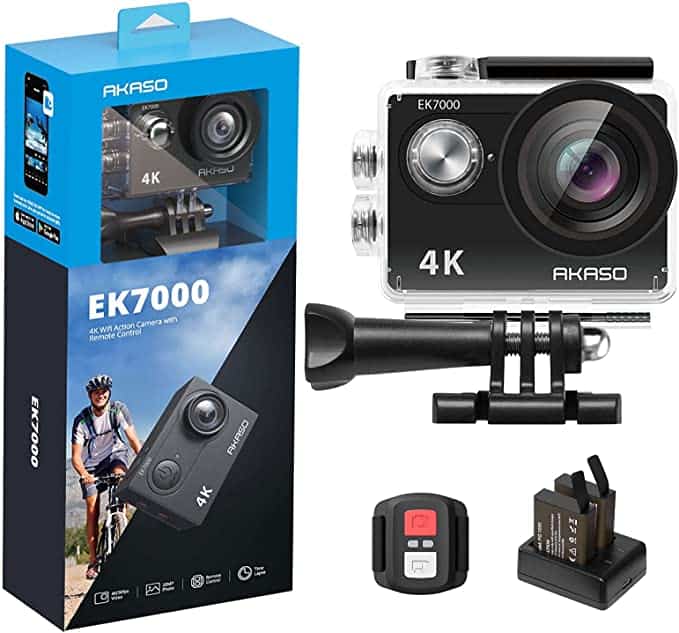
Wearable cameras have revolutionized outdoor photography and videography by offering a hands-free and immersive perspective. These compact and lightweight cameras can be worn or attached to equipment, allowing outdoor enthusiasts to enjoy their adventures while capturing moments fully. With their rugged construction, wearable cameras are built to withstand the challenges of outdoor environments, ensuring durability and reliability in various conditions.
The standout feature of wearable cameras is their ability to provide a first-person point of view, delivering a unique and immersive experience to viewers. The perspective obtained by wearable cameras puts viewers right in the centre of the action, whether they are exploring beautiful landscapes, taking part in adventurous activities, or plunging into the depths of the ocean. This immersive viewpoint adds authenticity and dynamism to the footage and images, enabling viewers to truly experience the adventure.
12. LiDAR Technology:
LiDAR technology, or Light Detection and Ranging, has revolutionized landscape photography by offering detailed 3D maps and precise depth information.
Using laser sensors, LiDAR enables photographers to capture immersive images with exceptional depth of field, adding realism and dimension to the scene. The detailed 3D maps provided by LiDAR technology assist outdoor enthusiasts in understanding the terrain and aid in route planning and navigation.
With its ability to enhance the visual impact of photographs and provide valuable topographical information, LiDAR has become an essential tool for landscape photographers, allowing them to create breathtaking images that truly showcase the beauty and depth of the natural world.
13. Advanced Stabilization Systems:
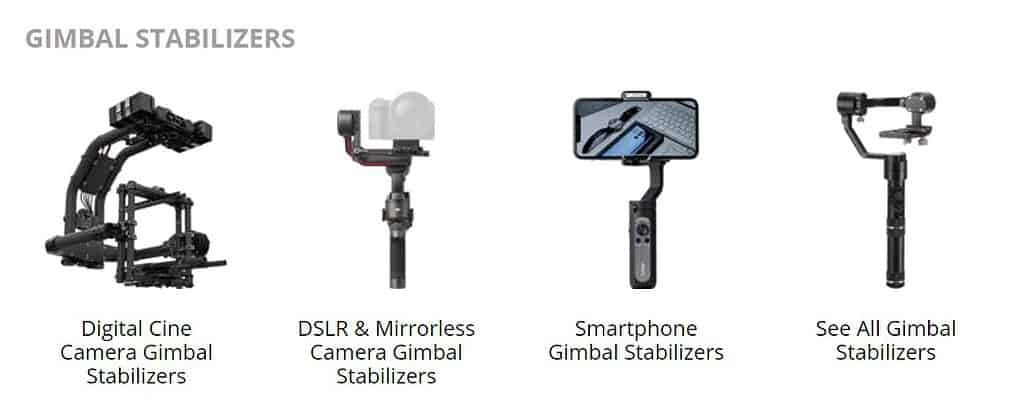
Advanced stabilization systems, such as gimbal systems and other innovative technologies, have revolutionized the field of photography and videography by minimizing camera shake and providing smooth footage, even in challenging environments.
These systems utilize mechanical, electronic, and software-based stabilization techniques to counteract unwanted camera movements and vibrations, ensuring professional-quality footage with fluid movements.
Whether capturing action sports, documenting adventure activities, or filming wildlife, advanced stabilization systems enable photographers and videographers to achieve visually appealing results by reducing blurriness and enhancing stability.
With these advancements, outdoor enthusiasts can confidently capture stunning visuals that convey the excitement and beauty of their adventures with a more immersive and engaging viewing experience.
14. HDR Video:
HDR (High Dynamic Range) video technology has transformed the world of videography by capturing a wider range of tones and delivering more vibrant and realistic visuals.
By merging multiple scene exposures, HDR videos offer enhanced detail, improved contrast, and richer colors, creating an immersive viewing experience. This technology reproduces the scene more accurately, resembling how the human eye perceives it.
With its ability to capture the brightest highlights and the darkest shadows, HDR video brings out subtle nuances and preserves details that would otherwise be lost in traditional video formats.
This advancement gives content creators greater creative control during post-processing and allows them to evoke specific moods and atmospheres. Viewers can now enjoy visually stunning and lifelike videos on HDR-enabled displays, immersing themselves in captivating content that showcases the true depth and richness of the captured scenes.
15. Time-Lapse Photography:
Time-lapse photography has become more accessible and impressive with the integration of time-lapse features in cameras and user-friendly software.
Time-lapse videos demonstrate the passage of time and capture the dynamic aspect of outdoor settings by taking several still pictures at regular intervals and blending them.
Integrated camera intervalometers simplify setting time intervals, while advanced camera systems control exposure and other settings. Dedicated time-lapse software enhances post-processing by providing intuitive interfaces and automated tools for editing and customization.
Time-lapse sequences allow outdoor enthusiasts to document stunning natural phenomena and offer a unique perspective on the subtle changes and movements that occur over time, fostering a deeper appreciation for the beauty of the world around us.
16. Wireless Image Transfer:
Wireless image transfer has revolutionized the sharing and editing process for outdoor enthusiasts, providing a seamless and convenient way to transfer photos and videos between cameras, mobile devices, and cloud storage.
By eliminating cables and physical connections, outdoor photographers and videographers can easily share their work with a wider audience through social media, messaging apps, and email.
The wireless transfer also enables quick access to editing apps on mobile devices, empowering enthusiasts to enhance their media and apply creative adjustments. Additionally, the ability to wirelessly back up and store media in the cloud ensures the safety and accessibility of precious moments from any device with an internet connection.
Wireless image transfer has greatly enhanced the efficiency and enjoyment of managing and sharing outdoor photography and videography.
17. Deep Learning for Image Recognition:
Deep learning algorithms have revolutionized outdoor photography and videography by enabling automated image recognition and tagging.
With the power of deep neural networks, cameras and software can quickly analyze visual data, identify objects, locations, and subjects, and assign relevant tags to outdoor images and videos. This automated process simplifies the organization and retrieval of visual content for outdoor enthusiasts, saving valuable time and effort.
Additionally, deep learning algorithms have the potential to enhance the editing process by providing intelligent suggestions for adjustments and effects based on the recognized content.
With their ability to streamline workflows and improve the overall quality of outdoor media, deep learning for image recognition has become an indispensable tool for photographers and videographers in capturing and managing their visual content.
18. 3D Scanning and Photogrammetry:
Combining 3D scanning and photogrammetry techniques offers many benefits for outdoor photography and videography.
It allows photographers and videographers to capture outdoor environments in a way that goes beyond traditional 2D images, providing a more immersive and detailed representation of the scene. Outdoor enthusiasts can highlight landscapes’ distinctive characteristics and topography by building precise 3D models, conserving their beauty and essence in a digital version.
These 3D models can create virtual tours, allowing viewers to explore and experience the outdoor environment as if they were physically present. Researchers and scientists can also utilize 3D data for analysis and study, contributing to geology, archaeology, and environmental science.
The application of 3D scanning and photogrammetry in outdoor photography and videography enhances the visual experience and facilitates scientific research and conservation efforts, making it a valuable tool for both creative expression and scientific exploration.
19. Cloud-Based Editing and Storage:

Cloud-based editing and storage platforms have revolutionized how outdoor photographers and videographers manage and enhance their media assets.
These platforms offer powerful editing tools and features, allowing users to adjust exposure, colour grading, and other parameters to create stunning visuals. Simultaneously, they provide secure and scalable storage options, eliminating the need for physical storage devices and ensuring data safety.
Cloud-based platforms enable seamless collaboration and sharing, allowing multiple team members or clients to work on the same project and distribute edited content easily.
By streamlining the editing, storage, and sharing processes, these platforms enhance efficiency and productivity for outdoor enthusiasts, empowering them to focus on their creative vision and reach a wider audience.
20. Instant Printing Technology:

Instant printing technology, through portable photo printers, has transformed the way outdoor enthusiasts capture, share, and enjoy their photographs. These compact devices offer a convenient and immediate solution for printing high-quality physical copies of images while on the go.
Photographers can instantly hand out tangible photographs to friends, family, or subjects, fostering a sense of connection and sharing in real-time, whether it’s capturing a stunning landscape or a candid portrait.
Beyond instant gratification, portable photo printers allow photographers to create photo albums and scrapbooks or decorate their living spaces with printed images, transforming their digital captures into tangible mementoes that reflect their outdoor adventures.
The ability to instantly print photographs adds a personal touch to the photography experience, enhancing the joy of sharing memories and showcasing creative work in a visually appealing and tangible form.
21. Smartphone Photography Accessories:
Photography accessories have altered the possibilities of smartphone cameras, providing outdoor enthusiasts with tools to enhance their shooting skills.
Lens attachments are a popular accessory, offering options like wide-angle, telephoto, and macro lenses that extend the creative possibilities of smartphone photography. These lenses enable photographers to capture expansive landscapes, zoom in on distant subjects, or capture intricate details with stunning clarity.
Portable tripods are another essential accessory for outdoor photography. They provide stability and flexibility, allowing photographers to set up their smartphones on various surfaces or in challenging environments. With a tripod, photographers can take long-exposure shots, capture steady videos, or set up their smartphones for group photos or self-portraits, ensuring that every shot is well-framed and blur-free.
Smartphone gimbals have gained popularity among outdoor enthusiasts for their ability to counteract camera shakes, resulting in smooth videos. These handheld stabilizers use motorized mechanisms to ensure steady footage, even while walking or running.
In addition to gimbals, other smartphone photography accessories like remote shutter controls, external microphones, and waterproof cases enhance the capabilities of smartphone cameras, allowing outdoor enthusiasts to capture stunning photos and videos in any environment. These accessories empower photographers to unleash their creativity and easily seize action-packed outdoor moments.
22. Advanced Camera Sensors:
Advanced camera sensors, such as backside-illuminated (BSI) and stacked sensors, have revolutionized the capabilities of modern cameras, delivering exceptional image quality and enhanced performance in various shooting conditions.
BSI sensors, with their innovative design that places the circuitry behind the photodiode layer, enable more efficient light capture, resulting in improved low-light performance and reduced image noise.
This means photographers can confidently capture stunning images even in challenging lighting conditions, such as dusk or dimly lit environments. Stacked sensors take sensor technology to the next level by incorporating advanced processing capabilities directly into the sensor structure.
The image sensor and processing components are stacked together with a stacked sensor, allowing for faster data readout, enhanced dynamic range, and improved overall image quality. This enables photographers to capture images with greater detail, richer colors, and better tonal range, ensuring that every shot comes to life with impressive clarity and depth.
23. Advanced Video Codecs:
Emerging video codecs, such as H.265/HEVC and AV1, have revolutionized how videos are compressed and delivered, offering efficient compression algorithms while maintaining high-quality video playback.
These advanced codecs employ sophisticated encoding techniques to reduce file sizes without significant loss in visual fidelity, resulting in more efficient storage and streaming of videos. H.265/HEVC, in particular, provides significant improvements over previous codecs, allowing for better compression ratios and reduced bandwidth requirements while preserving the details and clarity of the video.
AV1, on the other hand, is an open-source and royalty-free codec that offers similar compression efficiency and high video quality, making it a popular choice for streaming platforms and online video distribution.
With the adoption of these advanced video codecs, content creators, streaming platforms, and viewers can enjoy high-quality videos with reduced bandwidth consumption, faster streaming, and improved storage efficiency, enhancing the overall video streaming experience.
24. Extended Reality (XR):
Extended Reality (XR) technologies, including Virtual Reality (VR), Augmented Reality (AR), and Mixed Reality (MR), have revolutionized the way outdoor enthusiasts explore and engage with their surroundings.
XR allows users to virtually visit new locations, try out equipment, and participate in outdoor activities through immersive and interactive experiences.
With VR, users can be transported to stunning landscapes and engage in simulated adventures, while AR overlays digital information onto the real world, enhancing their perception of the environment.
Mixed Reality combines elements of both VR and AR, seamlessly blending virtual and real-world elements. Outdoor enthusiasts can push the limits of what is possible in outdoor experiences by utilizing XR technology, all from the comfort of their surroundings.
They can also improve their skills through virtual training. XR opens up a world of endless possibilities, allowing outdoor enthusiasts to expand their horizons, unleash their creativity, and experience the thrill of outdoor activities in entirely new ways.
25. Holographic Displays:
Advancements in holographic display technology have revolutionized how outdoor media is viewed and experienced.
Holographic displays create stunning 3D visualizations and interactive holograms, immersing viewers in a truly captivating and lifelike visual environment. These displays use advanced techniques such as light diffraction, laser projection, or volumetric display to create the illusion of three-dimensional objects floating in space.
With holographic displays, outdoor media can be brought to life in a whole new way. Whether it’s showcasing breathtaking landscapes, outdoor sporting events, or adventure activities, holographic displays add depth, realism, and interactivity to the viewing experience.
Viewers can engage with the content by manipulating holographic objects, exploring different angles, and experiencing a sense of presence as if they were physically present in the scene.
The applications of holographic displays in outdoor media are vast and exciting. They can be used in advertising and marketing campaigns to create eye-catching and memorable experiences and in educational settings to provide interactive and immersive learning environments.
Additionally, holographic displays can enhance the entertainment industry, enabling outdoor enthusiasts to enjoy outdoor-themed movies, documentaries, and virtual tours with a heightened sense of realism.
26. Thermal Imaging:
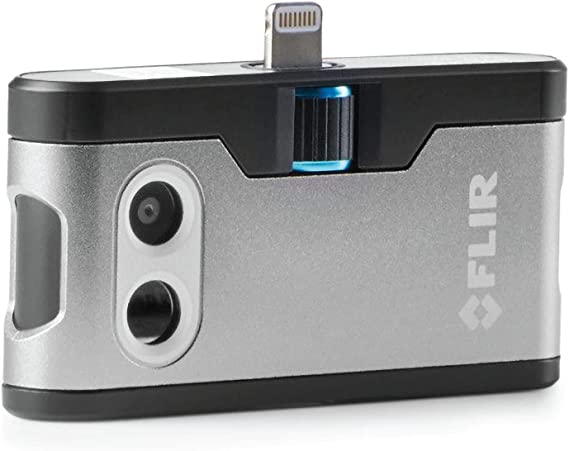
Thermal imaging technology has revolutionized outdoor photography by enabling the capture of infrared images, offering unique perspectives and insights, particularly in low-light or nighttime conditions.
Thermal cameras detect the heat signatures emitted by objects and convert them into visual representations, allowing photographers to see and capture scenes in a way that is beyond the capabilities of conventional cameras.
This technology is particularly useful for outdoor enthusiasts in wildlife observation, nighttime landscape photography, or search and rescue operations. Thermal imaging provides a new level of visibility in environments where traditional photography may struggle, such as dense foliage or foggy conditions.
It allows photographers to see and document the temperature variations in a scene, highlighting the thermal contrasts between objects and living beings. This capability opens up new creative possibilities, revealing hidden details and adding a distinct and captivating element to outdoor photography.
Additionally, thermal imaging can aid in identifying and tracking animals, detecting potential hazards or threats in the environment, and enhancing situational awareness in various outdoor scenarios.
27. Smart Integration with Outdoor Gear:
Smartly integrating photography and videography features into outdoor gear has transformed how outdoor enthusiasts capture and share their experiences.
These integrated technologies offer a seamless and convenient way to document adventures, from smart helmets to action sports equipment and wearable devices.
With built-in cameras, image stabilization, and high-resolution capabilities, smart helmets provide hands-free capturing of thrilling moments. Action sports equipment, such as drones and underwater cameras, offers unique perspectives in extreme environments.
At the same time, wearable devices like smartwatches and fitness trackers allow for convenient capture directly from the wrist. This smart integration simplifies capturing outdoor moments, enhancing the overall experience, and enabling adventurers to easily share their breathtaking views and memories, inspiring others to explore the beauty of the outdoors.
Conclusion
Emerging advanced technologies have significantly elevated outdoor photography and videography.
From improved camera sensors and stabilization systems to immersive technologies like virtual reality and augmented reality, these innovations have enhanced the quality, convenience, and creativity of capturing outdoor experiences.
Integrating wireless image transfer, cloud-based editing, and instant printing has streamlined the workflow. At the same time, deep learning algorithms and 3D scanning techniques have opened new possibilities for recognition and detailed modeling.
Additionally, thermal imaging, holographic displays, and smart integration with outdoor gear have further expanded the capabilities, allowing for unique perspectives, immersive visualizations, and seamless integration.
With the continuous advancement of technology, outdoor enthusiasts can continue to push boundaries, capturing and sharing the beauty of nature in ways that inspire and connect with others, ultimately fostering a deeper appreciation for the natural world.

